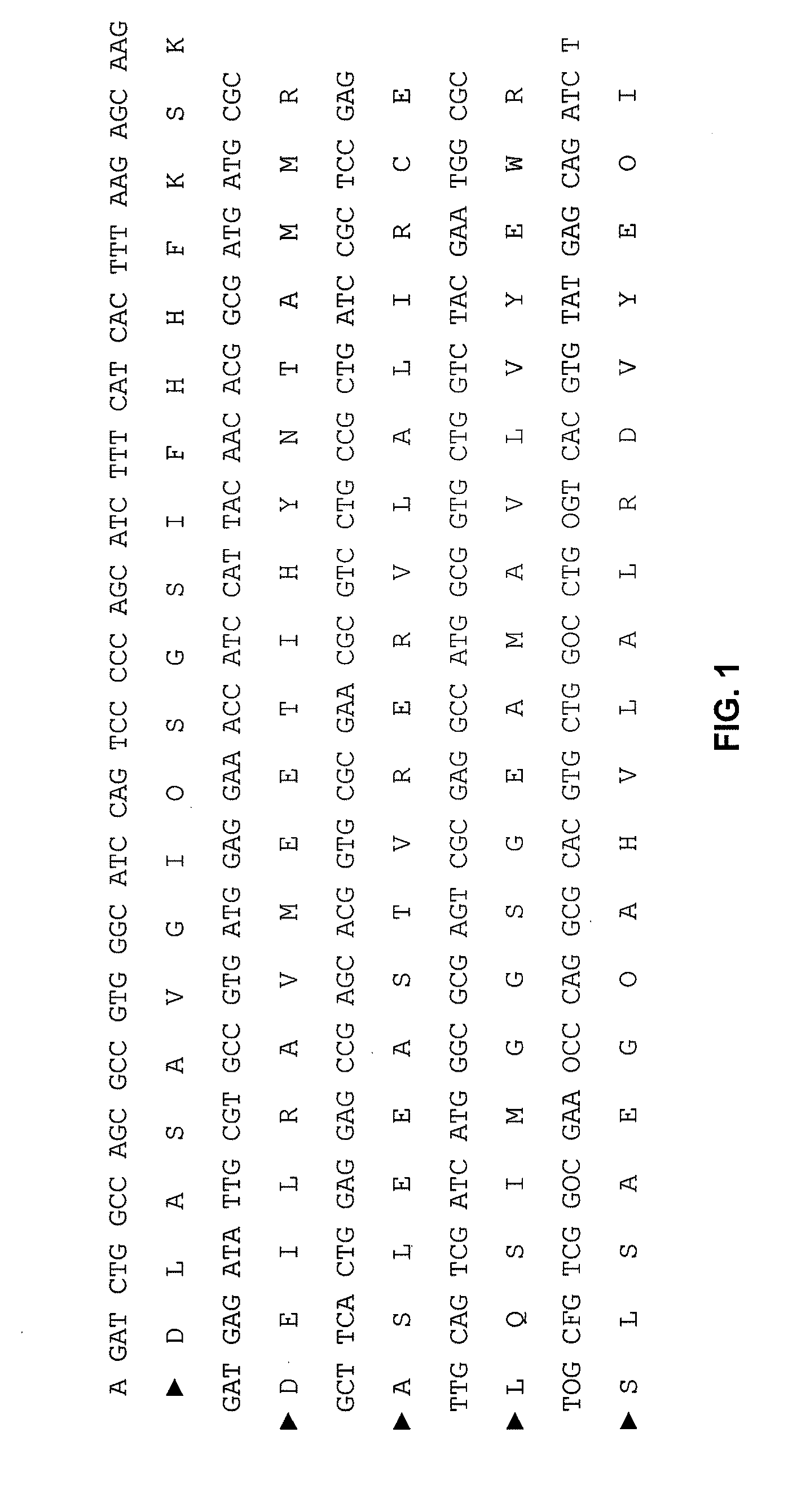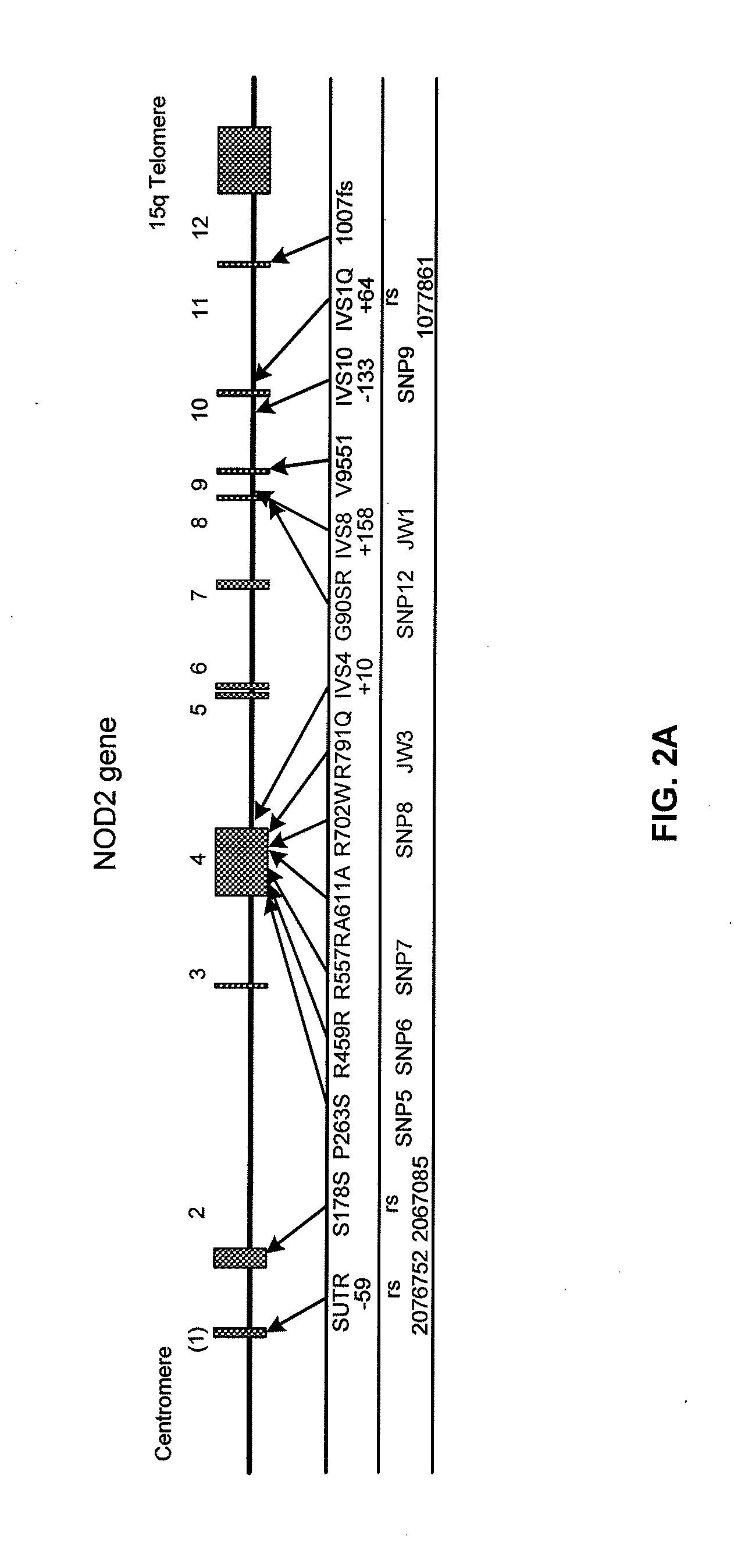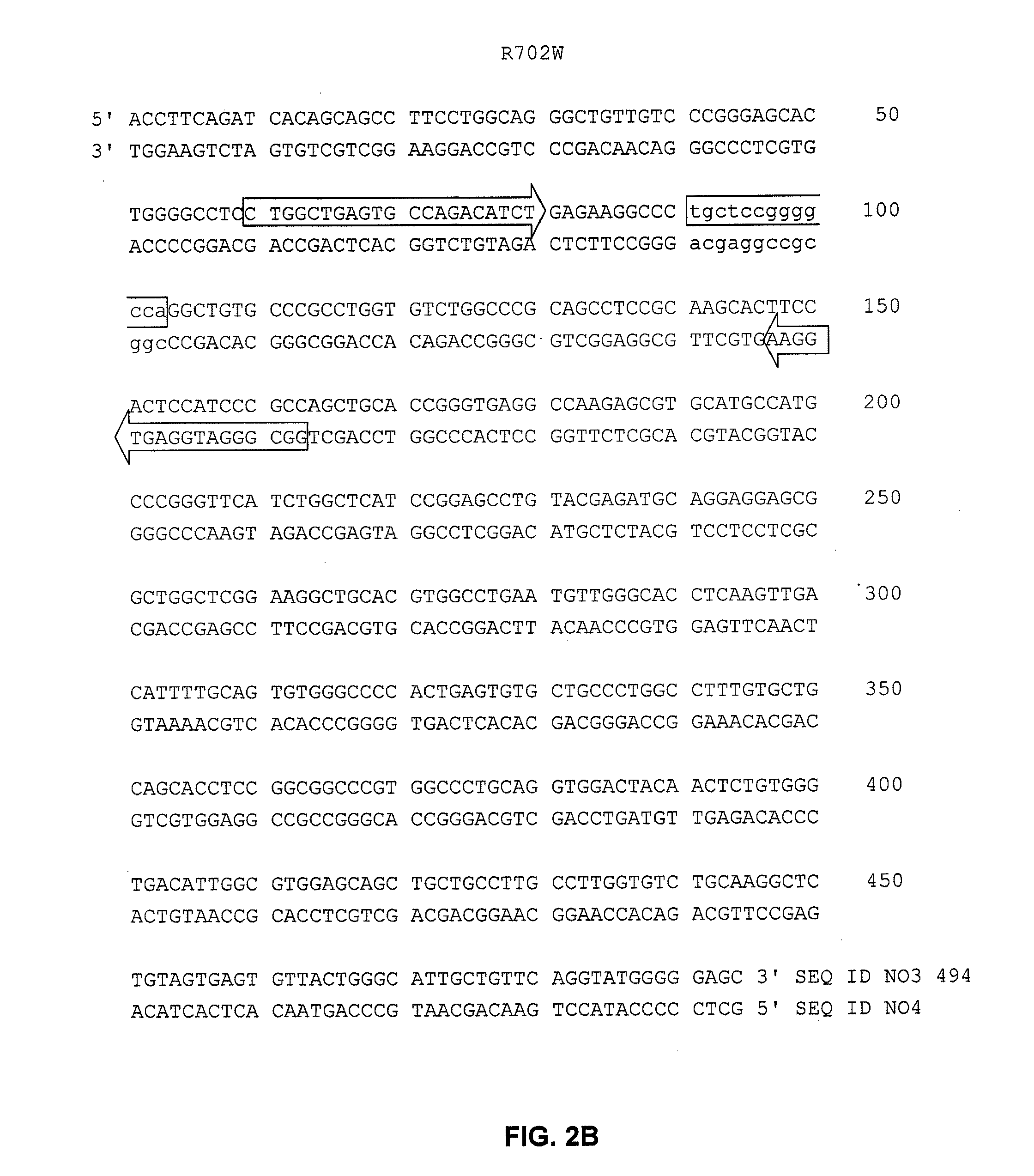Methods of assessing crohn's disease patient phenotype by i2 serologic response
a serologic response and crohn's disease technology, applied in the field of diagnostics and autoimmune diseases, can solve the problems of affecting diagnosis and treatment, affecting the diagnosis and treatment of patients with ibd, and increasing the risk of intestinal cancer in patients with ibd, so as to improve diagnosis and treatment, diagnose or predict susceptibility, the effect of detecting or predicting susceptibility
- Summary
- Abstract
- Description
- Claims
- Application Information
AI Technical Summary
Problems solved by technology
Method used
Image
Examples
example i
Antibodies Against the Bacterial Sequence I2 are a Marker of the Fibrostenotic Subtype of Crohn's Disease
[0115]This example shows that antibodies against the Crohn's disease-associated bacterial sequence I2 are an independent marker of the fibrostenotic subtype of Crohn's disease.
[0116]Clinical, serologic and genetic data were examined for 258 Crohn's disease patients under an Institutional Review Board (IRB) approved protocol. Briefly, a diagnosis of Crohn's disease in the patients was defined by the presence of a combination of established features from at least two of the following categories: 1) clinical—perforating or fistulizing disease, obstructive symptoms secondary to small bowel stenosis or stricture; 2) endoscopic—deep linear or serpiginous ulcerations, discrete ulcers in normal-appearing mucosa, cobblestoning, or discontinuous or asymmetric inflammation; 3) radiographic—segmental disease (skip lesions), small bowel or colon strictures, stenosis, or fistula, and; 4) histo...
example ii
ELISA For IgA Anti-I2 Antibodies
[0121]This example shows demonstrates that the presence of IgA anti-I2 antibodies in patient sera can be determined using an ELISA microplate, assay.
A. GST-I2 Fusion Protein
[0122]The full-length I2 encoding nucleic acid sequence (SEQ ID NO: 1) was cloned into the GST expression vector pGEX. After expression in E. coli, the protein was purified on a GST column. A GST control protein was also expressed and purified. The purified protein was shown to be of the expected molecular weight by silver staining, and had anti-GST reactivity upon western analysis. The full-length I2 encoding nucleic acid sequence (SEQ ID NO:1) has also been cloned into a Hex-His, expression vector, expressed in E. coli, and the resulting protein purified.
B. ELISA Analysis
[0123]Human IgA antibodies that bind the I2 polypeptide (SEQ ID NO: 2) were detected by direct ELISA assays essentially as follows. Plates (Greiner, USA Scientific, Ocala, Fla.) were coated overnight at 4° C. wit...
example iii
ELISA for Anti-Saccharomyces cerevisiae Antibodies (ASCA)
[0125]This example demonstrates that the presence of anti-Saccharomyces cerevisiae antibodies in patient sera can be determined using an ELISA microplate assay.
A. Preparation of Yeast Cell Wall Mannan
[0126]Yeast cell wall mannan was prepared as follows and as described in Faille et al. Eur. J. Clin. Microbiol. Infect. Dis. 11:438-446 (1992) and in Kocourek and Ballou et al., J. Bacteriol 100:1175-1181 (1969). A lyophilized pellet of yeast Saccharomyces uvarum was obtained from the American Type Culture Collection (#38926). Yeast were reconstituted in 10 ml 2×YT medium, prepared according to Sambrook et al., Molecular Cloning Cold Spring Harbor Laboratory Press (1989). S. uvarum were grown for two to three days at 30° C. The terminal S. uvarum culture was inoculated on a 2×YT agar plate and subsequently grown for two to three days at 30° C. A single colony was used to inoculate 500 ml 2×YT media, and grown for two to three days...
PUM
| Property | Measurement | Unit |
|---|---|---|
| diameter | aaaaa | aaaaa |
| diameter | aaaaa | aaaaa |
| diameter | aaaaa | aaaaa |
Abstract
Description
Claims
Application Information
 Login to View More
Login to View More - R&D
- Intellectual Property
- Life Sciences
- Materials
- Tech Scout
- Unparalleled Data Quality
- Higher Quality Content
- 60% Fewer Hallucinations
Browse by: Latest US Patents, China's latest patents, Technical Efficacy Thesaurus, Application Domain, Technology Topic, Popular Technical Reports.
© 2025 PatSnap. All rights reserved.Legal|Privacy policy|Modern Slavery Act Transparency Statement|Sitemap|About US| Contact US: help@patsnap.com



